Uvumi

A true newcomer to the Music 2.0 scene, Uvumi just launched in October of 2009, and it appears to be quite promising for artists, fans, and the entire community. However, Uvumi doesn't have quite the feature set that other websites offer, though it is leaps and bounds beyond MySpace Music or any of the major label commercial media giants running sites out there (example: OurStage).

The good: Dedicated to artists and fans, and to the community as a whole, Uvumi provides a truly seamless listening experience, one which is rivaled only by TheSixtyOne. You really can browse the site while you listen to music without any interruption and without any annoying popup windows, and you really do have total control over what you listen to and how you listen to it. You can create playlists and bookmark songs, and the daily popularity charts are a great way to discover new music. Song genres are determined by tags that listeners define for each song, so instead of just one person, or the artist, deciding which genre each song is, it is based on what the entire community thinks, which is an interesting and different way of approaching the situation. Also, playlist creation and management is super easy, and really cool, as they don't seem to enforce any limits on how many songs or playlists you create.
Best of all, at least for artists, Uvumi has a tool called Uvumi Press Kits. It lets artists create very nice PDF press kits that they can use like a standard EPK or they can print them out and hand deliver them, old school style, to venues, radio stations, and other contacts. And, incredibly, the press kits have no branding at all, which I actually think is quite amazing. If you have ever seen a sonicbids EPK, then you should appreciate what it means to have no branding: artists can present their press kit as their own creation, without having to have some company's logo plastered all over it. This tool is unlike anything I have ever seen for press kit creation, and the fact that it's free is a really great value for indie artists.
The bad: Boring to look at. From a graphic design standpoint, there's not much going on there. But then again, this might be good because it brings more attention to artist content instead of flashy interface design. Another thing that is really lacking is proper music discovery tools. The charts are great, and if you make friends and become a fan of lots of other members, you'll get status updates about the songs those people like, playlists they create, etc. You can view other users' listening history, too, which is a nice way to explore, but it's not very easy to find and you really have to dig around to discover new stuff that might not be on the charts or in peoples' playlists.
All in all, this small project out of Austin, Texas, has a lot of potential, I will be keeping an eye on them to see what they do in the future.
Grooveshark Summary:
- Music source: Independent artists
- Platform: AJAX, no flash
- Target Audience: Indie fans, indie artists, and underground music addicts
- Seamless Music Player: YES (no popups!)
Our Stage
The first thing you'll notice when you arrive at OurStage.com is an icon in the upper-right hand corner that says "in partnership with AOL Music." This should be your first signal that the website is going to be chock full of mainstream music and very annoying animated advertisements, which of course it is.
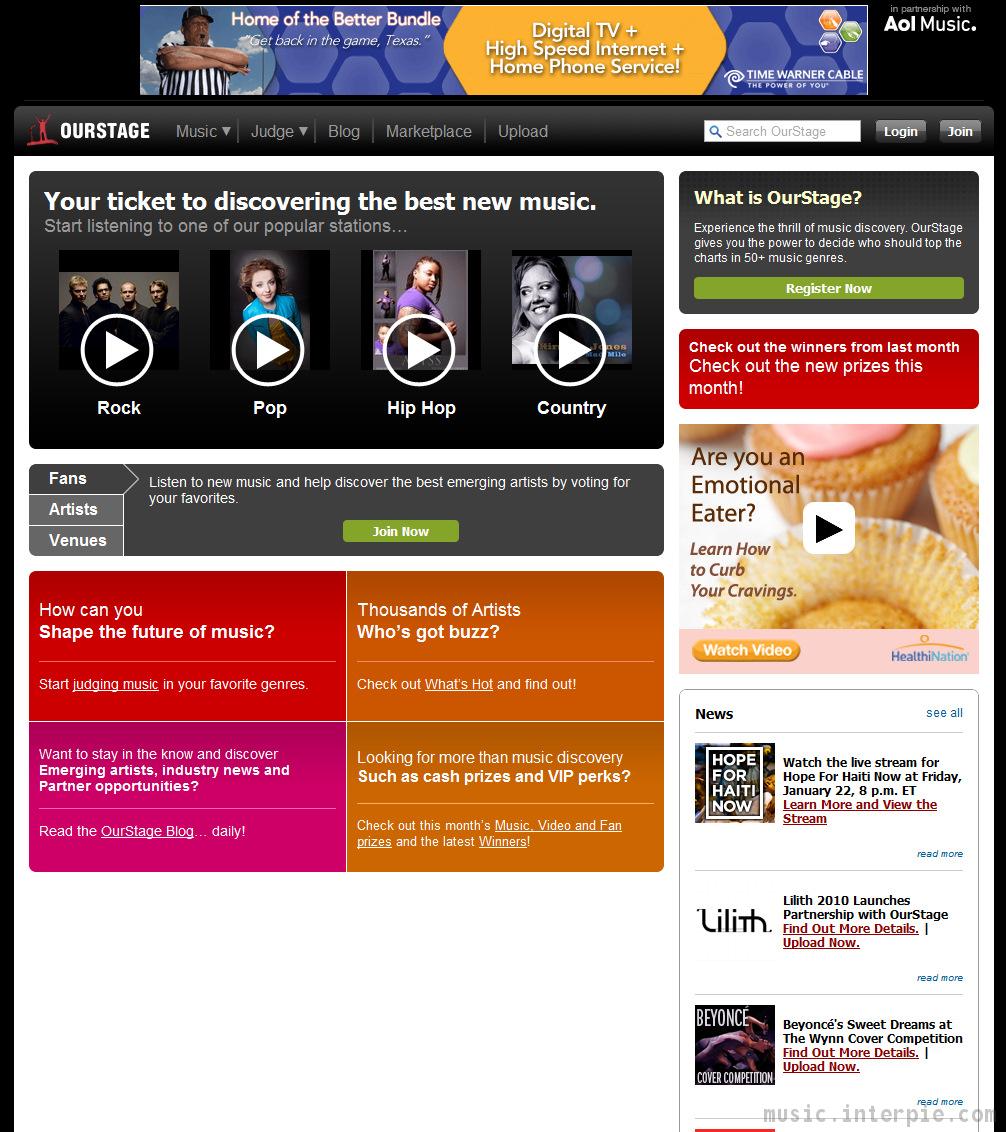
Next, if you can look past those annoying, flashing, distracting ads, you might click around and find that you can play music, of course. BUT, it requires you to allow a pop-up window with the player in it. If you don't enable that popup in your web browser, well, you can't listen. The more you cruise around the website, the more boring it becomes, and the more you'll want to head over to something else, like TheSixtyOne or Uvumi, where you can listen to music without popup windows and without a major corporation shoving popular crap down your ears.
Now for some good things (not really): They have a lot of music, though it is not easy to browse at all. You can get to a genre page, but there are only 14 total artists listed on each page. How can you see everything and freely browse? You can't. You can click a link to "Show More", but then you just get one page of artists, with no way to see more. Here we are with yet another example of a major media conglomerate deciding what you should listen to instead of giving you the freedom to browse around for yourself.
One thing that is kind of cool, but still not very helpful to the music community, is the Judging area. If you end up on this part of the website, and if you can (again) ignore the very distracting animated advertisements plastered all over the page, you'll find an interesting interface where can listen to two songs side-by-side, and rate which one you like best. While this is kind of fun, it seems more like a trick to get data about visitors' likes and dislikes than a feature that adds any value to the artists being judged or to the user experience.
When it's all said and done, you'll probably click away from OurStage feeling a bit dirty, perhaps soiled by the filth of corporate greed and artist exploitation, and you might also feel belittled by Aol's attempt to force-feed you content that they think you should like instead of giving you the freedom to explore and listen on your own.
Sorry, that was a pretty brutal review of OurStage.com, but come on folks, it's a terrible website that adds little, if anything, to the overall music community. Correct me if I'm wrong, please!
OurStage Summary:
- Music source: Major Record Label Catalogs and independent artists
- Platform: Standard HTML website
- Target Audience: Mainstream followers, MTV viewers
- Seamless listening: No
Sellaband
 SellaBand is a pretty cool idea. Basically, artists sign up to try and raise funds from fans so they can produce a record, go on tour, buy new instruments, or fund that new kegerator
SellaBand is a pretty cool idea. Basically, artists sign up to try and raise funds from fans so they can produce a record, go on tour, buy new instruments, or fund that new kegeratorThis is a really cool idea because it fully embraces the fact that the current marketplace for bands and musicians is a different world than it was a decade ago. SellaBand has actually enabled dozens of bands and artists to record CDs and plan big tours to build their individual brands in a competitive market. Of course, they have to make a buck on the side, so SellaBand collects 10% of the target amount that bands raise, which may seem a bit steep, but hey, gotta pay the bills, right?
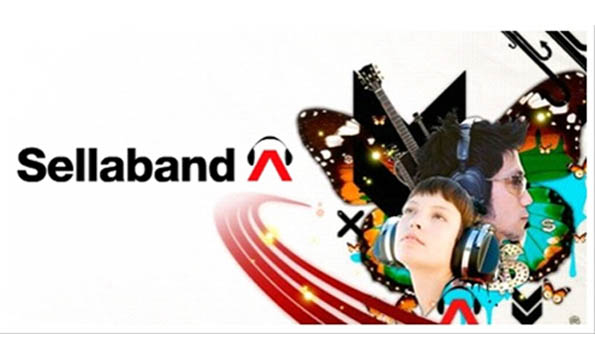
Right, but that's not the only way they are making money from this idea. They also have a music store where you can buy MP3 songs for $0.99 each, and presumably they take at least 10% of those sales. Furthermore, they run ads all over the place, which is fine except for the fact that they also take a cut of all the money that goes through their platform. You know what would be really nice? If they stopped running advertisements so the website could be a lot cleaner, more direct, and maybe look a little less like a vehicle that was built specifically to make a profit. Do we really need to see a huge banner of "Partners" at the bottom of every page on the site?
Anyway, SellaBand is a platform to help artists raise money to advance their careers. But does it work? Supposedly, yes, it does work sometimes, but you probably haven't heard of it because of the shortcomings of the website itself. Specifically, there is no technical advantage of SellaBand.com over Facebook, or even MySpace, in terms of the interface and layout. Sure, it looks clean, and it navigates nicely, but it is missing any type of seamless music player, playlist support, and robust social networking features.
When it comes down to it, SellaBand is a fantastic concept, and we recommend visiting this website if you like the idea and want to help budding artists make it in the new music marketplace. If nothing else, you can see a radical concept at work in the new era of Music 2.0.
SellaBand Summary:
- Music source: Independent and unsigned artists
- Platform: Basic HTML website
- Target Audience: Indie fans, music consumers, die-hard fans with money
muxtape
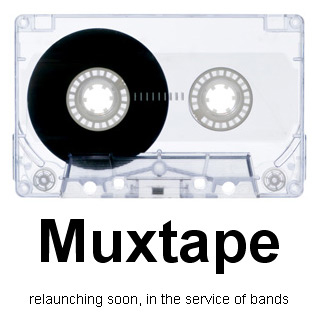
Unlike so many other music startups, Muxtape arrived on the music social network scene with a very stripped down and minimalistic interface toting a niche product to a strong niche user base. Justin Ouellette, creator of muxtape, had a simple and fun idea for his site. Simply put, he wanted to create a site where individuals could upload pre-made MP3 playlists (mixtape) for others to discover and share new music that they may have not heard before. Its intended purpose was to introduce you to new music that you would then hopefully go and buy. Much to the surprise of everyone following new emerging music social networks and Ouellette him self, the first day of the website launch proved to be a huge success bringing in 8,685 users. If that wasn't impressive enough, the new company brought in a total of 97,748 users in just the first month of launching. That is no easy task for a scrappy startup and a definite shoe in for elevated press on the company. Much buzz had surrounded muxtape early on with a strong underground following and indie music culture popularity, which lead many to a very simple and unanswered question. The question being of course, "How is any of this legal at all?". Well, with many diverse sides to the story, the answer to that question was that muxtapes legality was rendered moot.
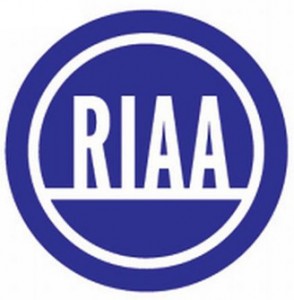
On August 18th, 2008, the RIAA had shut down muxtape due to accusations of copyright infringement. Many legal discussions occurred between officials from the four major record labels (the big four), other industry professionals, and Justin Ouellette himself. Due to the sheer power and influence of the of the RIAA and their major record label counterparts, Ouellette was forced into a loose loose situation if he were to chose to go up against them legally. After much deliberation and consideration,Ouellette decided to scrap the original muxtape idea and focus on turning the muxtape brand into a different functioning site all together that was primarily focused on musician promotion. A full description of the account can be read here.
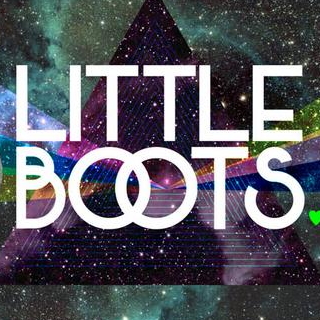
Since the shut down of the original muxtape, there has been much anticipation into what kind of services and online music tools they would be offering musicians. Would they focus on band management, would they provide a seamless music player for their listeners, will you be able to sell your goods directly to your fans through the site? Only time will tell. On January 27th, 2009, muxtape re-emerged with a fresh new look and preview as to what they were capable of doing and offered a bit of incite as to what was coming. At that time, they had stated that it would only be a few weeks before they would open the site to all musicians and offer more tools for use. It has been 9 months since that time and there has been no change in the site or updates on progress since their re-launch. As many have considered muxtape to be dead, there are others that feel the site is biding its time and letting this new music market work itself out before re-emerging and staking claim amongst the giants, Myspace Music and Facebook. Muxtape has already got the attention of artist's such as Little Boots, Dan Deacon, and Of Montreal. That is a great step to gain support from such influential indie bands. If muxtape comes back and opens the site to the public, it will be very interesting to see what musicians will choose to move to use their platform.
Muxtape Summary:
- Music source: Major and Independent Musicians
- Platform: Dynamic HTML based web servicec
- Target Audience: Independent Musicians
iLike
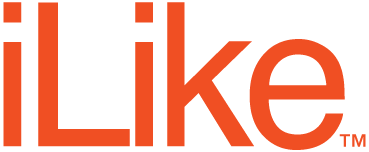
Like so many new music social networks today, it can be quite a cumbersome task building a online profile and establishing relevant networks in the new and growing community you have just found. Most of these new sites linger for a while offering basic and generic social networking functions for their users which rarely differ from their competitors. After the initial start-up buzz has passed, most fizzle out, while others get their break when critical mass is met and viral adoption occurs. There has only been a handful of company's that have attained wide spread adoption to their service and remain in the spotlight as major players in the music social network business. Amongst this group of real time contenders is the company iLike.
iLike has a swift and steady climb into the competitive arena of digital music streaming and online artist promotion, challenging the likes of other established music social networks such as Imeem, last.fm, and Myspace Music. Making strong alliances early on in the game with major record labels, independent record labels, and funding from major concert ticket giant Ticketmaster to the sum of over $13 million, has given iLike the sort of push and platform to stand on that other scrappy start-ups would otherwise not receive. That being said, it was a fast and inevitable rise to the competitive top ranks of the music social networking world. All though iLike has many online promotional tools for musicians and applications for users to experience their music, the site still lacks profile customizing features for bands, artists, and its users, as well as lacking a seamless music player.

A smart power play and large milestone in the company's evolution came with the joining of the iLike application and Facebook. On July 17th, 2007, a iLike/Facebook application was launched allowing facebook users to recommend songs and artist to their friends, find concerts of your favorite artists, and play a music-based game to play among your friends in the social network. This proved to be a match made in heaven for some time as both companies helped each other grow their user bases and bring attention to their services. But as the saying goes, "all good things must come to an end", so was the case with iLike and Facebook. After many rumors and speculations had accumulated that the relationship between Facebook and iLike was disintegrating, other rumors started spreading that iLike was up for sale to the highest bidder. After much internet buzz on the topic of a buyout, the facts came through on August 19, 2009. Myspace had officialy bought out iLike for $20 million. Quite the dilemma for Facebook since Myspace was their direct and largest competitor. Although most agree that it was a great buy on the part of Myspace for a mere $20 million and amazing leverage for iLike in both of the giant social networking pools, time will only tell if the buyout will prove profitable for Myspace and a serious a blow to Facebook as others see it. At any rate, iLike has launched themselves into the spotlight once again and continues to be crux of conversation in the digital music world.

Since iLike's inception in January of 2002, the Patrovi brothers, Ali and Hadi, have had their hands quite full. Birthing iLike out of the pioneering music social network website Garageband, raising ilike to the top ranking competitors on the scene, inventing Rock Band and Guitar Hero, and managing the sale of their company has proven to be a roller coaster of ups and downs along with financial strife and great payouts. Although iLike has been sold off to Myspace, it will be interesting to fallow the Patrovi brothers and see what next ventures may come along. I imagine they have no intention of slowing down any time soon.
iLike Summary:
- Music source: Major Record Label Catalogs, Independent Record Label Catalogs, Independent Musicians
- Platform: basic HTML based web service
- Target Audience: Mainstream followers, Facebook Users, Myspace users, Independent musicians
MySpace Music
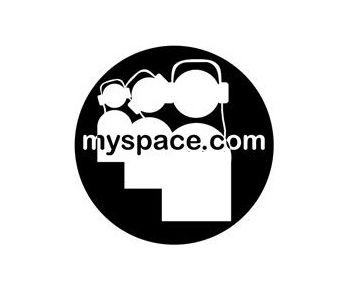
As the grand Daddy of online social networks and vendor of the largest catalog of online music content, Myspace music remains the go-to spot for online music discovery and necessary advertising platform for all bands today. With many new start-ups competing for market share, myspace is constantly under fire by these new emerging company's with something to prove. Funny thing about myspace is, even though there are many new and seasoned competitors out there, that in many ways offer superior service's, myspace knows that they hold some what of a obscured monopoly on the music social networking scene. The reason this monopoly exist is due to the basic fact that they were the first real serious music social network to gain and maintain credibility to represent musicians and their image. In many ways actually creating an image for many of the faceless emerging bands out there with no means of promoting themselves. Another reason this quasi monopoly exist is due to the sheer volume in numbers of the user base that they hold. This means that since myspace has such a large user base and is already the most well know go-to spot for free on-line streaming music, not having a band profile with myspace would be a very poor marketing move for the promotion of your brand. So even if you don't like the site and how it operates, it is wise to at least have the minimal contact, band, and music information available for the many potential new fans that could find you.

At the start, myspace was just another new online social network getting its feet wet in the new waters that were emerging all around it. It was the unpredicted establishment and growth of users promoting their music in their profiles that sparked the whole online music social network revolution. Some would say it all started with myspace and others would say that it really started with last.fm. Seeing the immediate popularity and potential behind such an influx, focus and embrace of musicians became very apparent. Rupert Murdoch's News Corporation bought myspace in 2005 for $580 million and shortly after that created a UK version to tap into the music scene there. Over time this was accomplished. As well, after the purchase, they launched their own record label, Myspace records, to discover new talent.
As with most popular things, growth was inevitable and ensuing a long litigation between myspace and universal music group for copyright infringement, Myspace Music was created. This is a separate company all together that is a joint music venture, with equity stakes from major record labels, that allows users to stream music on demand, create music playlists, and add music widgets to their profiles. With the new company came a new face for the myspace music world. A huge overhaul was done to the platform and face of the site. Many new tools were added for artists as well as users. This face lift came just in the nick of time though. Imeem, the fastest rising competitor to myspace, had just finished the revamping of their music social network. And with facebook gaining an obvious lead in popularity and user registration, as well as unique visits, myspace had no time to linger. Taking a firm stance back into the progressive music social network arena, it seemed that they had saved their credibility as a lasting player in the online music business.
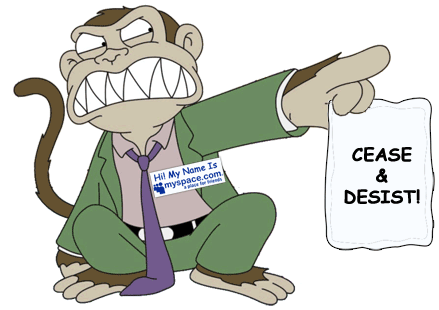
Although myspace music continues to be the most dominant music web site today, many still remain unhappy about its services, alliances ,and marketing methods. Focusing on a few major black eyes, starting with the most obvious. Ads! Ads! Ads! We all know that the monetization platform for most of these music streaming websites is ad-based. The only thing wrong with that is the quality and quantity of ads that are being distributed to you. In the case of myspace, you are bombarded with a large arsenal of highly un-targeted adds that either have no relevance to you or are down right offensive. And there is no way around it. One would think that a food conscious band is not to happy about the huge banner add above his band profile promoting McDonald's new super sized whatever. As for the user experience, the lack of a seamless music player is quite inconvenient for all users and seems to suggest that myspace is more concerned with controlling your music and user experience rather than providing their users with an open and user friendly listening and operating ability. Another major black eye for myspace music is that all their music alliances side with the major record labels Sony BMG, Universal Music Group, and Warner Music Group. Through out their life span, myspace has show little love for independent music labels and continues to mostly embrace mainstream popular music. As said in the start of the article, myspace remains the grand daddy of music social networks due to its sheer enormity. This does not mean that there is not room for others to take on market share. Others that have challenged myspace's crown have been PureVolume, Imeem, Last.fm, and recent new comer Spotify . All have their own great attributes and blaring holes. It will be most interesting to see who will last this new digital music revolution.
Myspace Music Summary:
- Music source: Major Record Label Catalogs, Independent Record label Catalogs, Independent Musicians
- Platform: Basic HTML based web service, Flash Application in Web Browser
- Target Audience: Mainstream music followers
Pandora Radio
Pandora is a one-of-a-kind internet streaming radio service that basically attempts to play stuff that you want to hear based on what you tell it you like. It works like this: You arrive at Pandora.com and tell it the name of an artist or song that you want to hear. Their system looks it up (quickly, might I add) and asks to make sure their result is what you had in mind. Then it starts playing the stuff you like. When the song ends, it puts on something else that is similar to what you wanted in the first place. You continue to tell it what you like and don't like by giving each new song a thumbs up or a thumbs down, so that it tunes itself to your tastes over time.
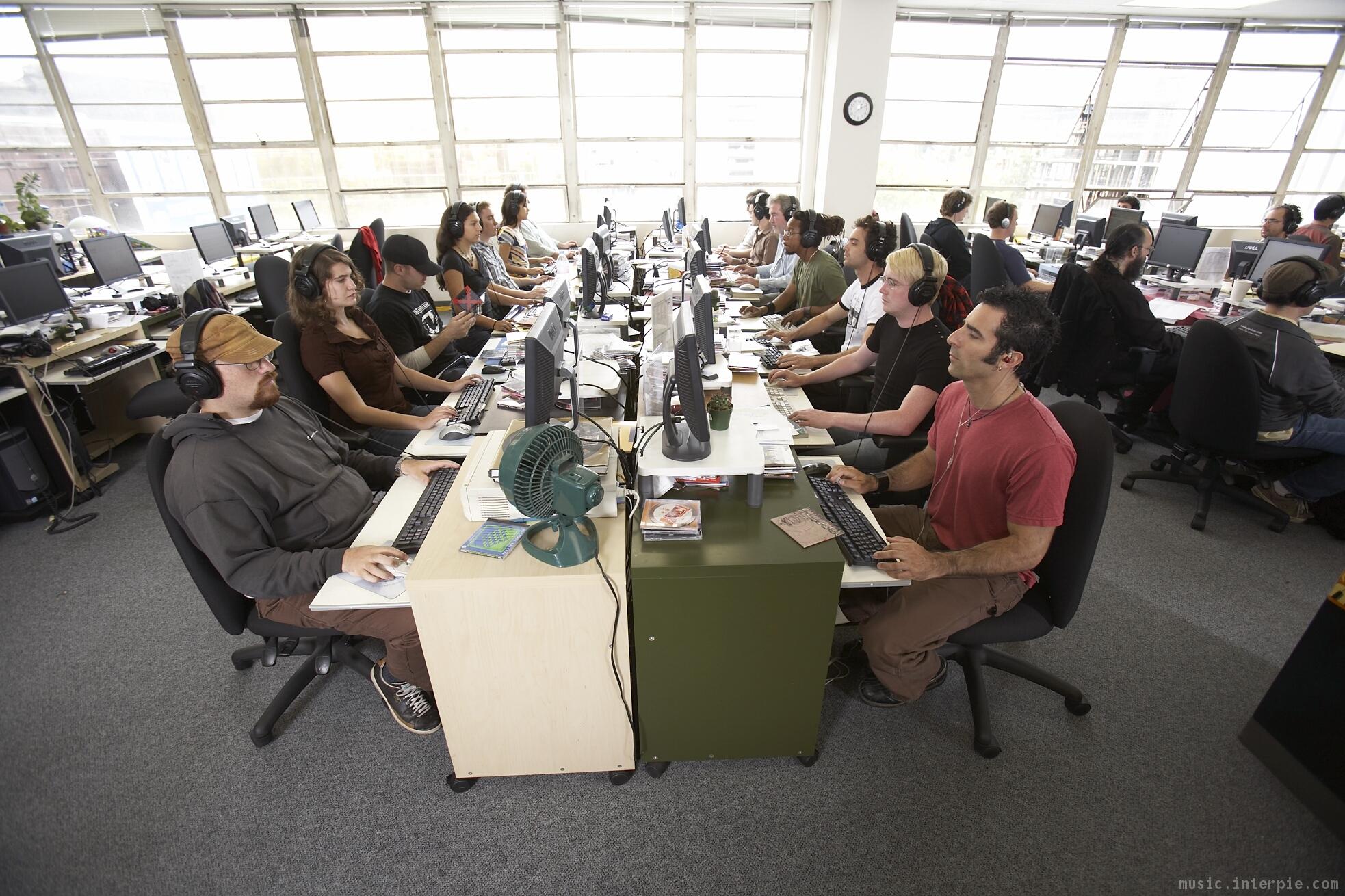
Most of the time this is an amazing way to discover new music you have never heard of but that you might really enjoy. Pandora provides links to directly buy whatever it is you're listening to, so if you're extra stoked on it you can just click and order a CD or downloadable mp3s right away.
Pandora also has a genius iPhone application that actually lets you stream music directly to the phone, making it even better than an iPod in many ways. This is the kind of innovation and super useful feature that users clamor over, and is a great example of what an excellent service Pandora provides.
How it works: The secret behind Pandora's incredible recommendation engine is actually thousands and thousands of man-hours. They have employed countless audiophiles to sit at computers and listen to CD after CD, categorizing and cross-indexing every artist, song, and genre to build an unbeatable stash of music recommendations!
Pandora Summary:
- Music source: Major Record Label Catalogs, Independent Record Label Music Catalogs
- Platform: Flash Application in Web Browser
- Target Audience: Mainstream followers, Independent music fallowers
Reverb Nation
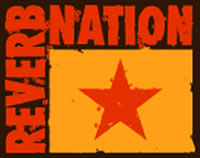
What more can music social networks offer bands and artists today other than a place to post their music and content for others to see and use freely. Where are the real time tools to help artist promote themselves and and help organize their content and careers. One up and coming music 2.0 company, Reverb Nation, is trying to fill the gap between social networking and quality marketing tools for artists, musicians, and venues. As this has proved to be a very daunting task which no site today has fully grasped, Reverb Nation is by far the closest in achieving those goals and has potential in being the go-to site for musicians, venues, and promoters.
As a very feature rich site, Reverb Nation has a large list of free tools to help musicians promote and sell their music/brand. At a quick glance , lets go down the list of free offerings from this site. Artist Profile, Band Equity, Street teams, Tune Pack, Facebook Applications, Bebo Applications, Gig Finder, Buzz Tracker, Fair Share, Widgets, Store link, Retail links Widget, Detailed Stats, Fan Reach.
Not everything is free on Reverb Nation though. They carry some specialty tools for musicians and promoters that come with a cost. These features include their digital distribution package, Reverb press kits (which is more of a summary page of your profile than an actual deliverable press kit), fan 360, mega song storage, and fan reach pro. While Reverb Nation has become rather popular recently, the fact remains that they are taking a 'strictly business' approach to artist promotion, charging a premium for many of their services, and employing devious methods of driving fan traffic, such as their 'Exclusive Content' feature.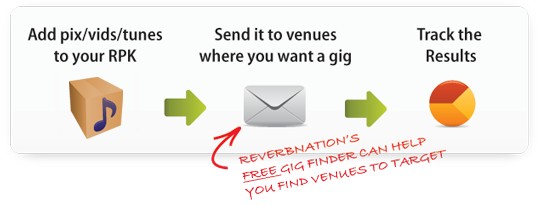 Forcing fans to hand over personal information for access to full streams of your posted tracks doesn't seem much different than forcing them to pay money, and Music 2.0 is all about embracing Free and casting a very wide net to capture the attention of fans rather than shutting them out by making them pay.
Forcing fans to hand over personal information for access to full streams of your posted tracks doesn't seem much different than forcing them to pay money, and Music 2.0 is all about embracing Free and casting a very wide net to capture the attention of fans rather than shutting them out by making them pay.
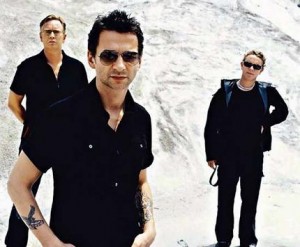
Reverb Nation was founded in October of 2006 and has been gaining a steady stream of users and popularity since its conception. Popular musicians such as Depeche Mode and Maddona to Lil Wayne and Pantera have profiles on the site where you can view their information and listen to their music. Obviously Reverb Nation has a relationship with one or more major record labels and many more independent labels but they are not disclosing that information to the public. As a tools and social networking site for marketing your band or music, Reverb Nation is a good avenue to promote your content. I am a bit skeptical of the company in some way's though. Since they do not disclose their standings with major and independent record labels and do not discuss their stance on how your information is used or not used by their company. Its hard to say where their standing is with the privacy of your content and information and how it is used by their company , investors, and partnered labels and other company's. In today's world of marketing sharks and big name partnerships, who knows how safe your content and user information really is.
Reverb Nation Summary:
- Music source: Major Record Label Catalogs, Independent Record Label Catalogs, Independent Musicians
- Platform: Basic HTML based web service with flash Application in Web Browser
- Target Audience: Mainstream followers, Independent music fallowes, Bands and musicians, Facebook and Twitter Users
Topspin Media

Promoting yourself as a musician or band in today's times are proving to be as difficult as they are exciting. With so many companies offering services on ways to promote your music and brand as a musician, band, or artist, who's to know what will work or not. Topspin is a promising new media technology company from what the public can gather. They are claiming to offer "leading-edge marketing software and services that help artists and their partners build businesses and brands". Although they are not disclosing their platform to the public, and have not done so since their founding in in June 2007, They have worked with a handful of successful musicians to use their platform in marketing their brand.

Since the public has had no real hands-on experience with this software, we can only understand what they offer by their own descriptions and users testimonials. A description offered by Topspin on the free tech directory ChrunchBase states "The company gives artists the tools to manage their catalog and their fans, generate demand for their music, and gather insights to improve performance. Topspin's main product, the Topspin Manager, was introduced to a select group of artists and managers in January 2008 and uses permission marketing and technology best practices to help artists generate demand for their content and deepen engagement with their fans". As this sounds really amazing and breakthrough, we the potential users are sitting on the sidelines wondering what is actually under the hood and when we will be able to drive.
One cant be too skeptical of an elusive software company when you consider the people and bands that have partnered with them so far. From the Beastie Boys to Eminem and Arcade Fire to Brian Eno, Topspin has an already impressive catalog of artists and musicians who currently use their services to promote and sell their music and products. Trent Reznor, front man of the band Nine Inch Nails, is even quoted saying on Twitter, "Beastie Boys / Topspin get it right once again. This is how you sell music today." Impressive, but none-the-less all these artists in Topspin's catalog are well known and already have a large fan base either in the indie arena, major arena, or both. It remains to be seen if this platform will be effective for independent musicians that are up-and-coming and established musicians that have yet to harness the potential of these new tools. When this platform is opened to the public we will all be able to see the full extent of what Topspin is really offering and how much it is actually going to cost to use such a service.
Topspin Summary:
- Music source: Major and Independent Musicians
- Platform: Basic HTML based web servicec
- Target Audience: Major and Independent Musicians
Last.fm
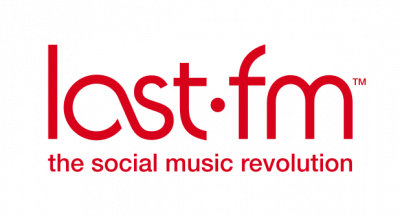
As a major player in the online music social networking world, the company last.fm has proven time and again that they can run with the best of them. Coming from the UK, last.fm is sort of a mix between the online music streaming site pandora, and myspace music. Last.fm is a streaming media service that also has a built-in social network comparable to most other social networking sites today. You can, create your own radio stations, make and share playlists, build a free media library, as well as other relative functions and features. As you use the service, it learns what you like and fine-tunes its recommendations to your preferred tastes. Last.fm also allows you to purchase music tracks and full length albums via Amazon, eBay, 7 digital, and iTunes with easy to use buy buttons. As a music discovery tool, Last.fm proves to be a great source for new and classic music targeted towards music fans and listeners.
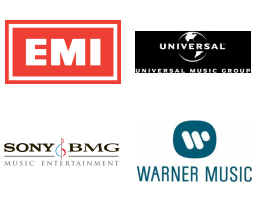
Having partnered with the three major record labels EMI, Sony BMG, and Warner Music Group and many other independent record labels, last.fm claims to have over 3.5 million songs in their music library available for online streaming. As well, independent record labels and unsigned artists are encouraged to promote their music on Last.fm. Since the filtering and recommendation features allow your music to be played for users who already like similar artists, it gives you greater exposure to fans and listeners that might not otherwise come across your music. Labels and artists can upload their own music for streaming and Last.fm provides access to weekly airplay statistics, with avenues for promoting individual artists or tracks. Labels and artists may choose whether their music is to be made available for streaming only, or for purchase or free download. Many options are available to promote your music, especially if you opt-in for their monthly subscription which only cost $3 a month.

This site offers an extensive library of music and the ability to network with other users. Their customized radio makes smart choices based on other users input and can give you access to many new artist recommended to you based on your taste in music. Say you type in the artist Radiohead, their scrobbler will then present you with a list of music that is similar to the band or artist you have typed in. Pretty cool right? Yes, very cool, but with the up side of things, there always is a downside. One of last.fm's blaring black eyes is the obvious lack of a seamless music player. It is quite an annoying user experience to be listening to music on an artist profile only to have your listening experience stop when trying to do anything else on the site such as look at their pictures or check out when their next show is going to be. This is a major inconvenience and and a very controlling move by last.fm. Another black eye is that they monitor your user behavior and your listening choices then discus them with their partnered record labels. Kind of scary in the privacy sector don't ya think? If you are prone to Big Brother paranoia, this is not the site for you. But if you couldn't care less about weather a label or company monitors your tastes, or the fact that anyone can upload your music, pictures, and information then assume control over your profile identity without you knowing, you will be given access to lots of new music and an easy way of finding it all.
Last.fm Summary:
- Music source: Major Record Label Catalogs, Independent Record Label Catalogs, Independent Musicians
- Platform: Basic HTML based web service with flash Application in Web Browser
- Target Audience: Mainstream followers, Independent music fallowers Facebook, twitter, and digg Users, Bands and musicians



 Subscribe
Subscribe